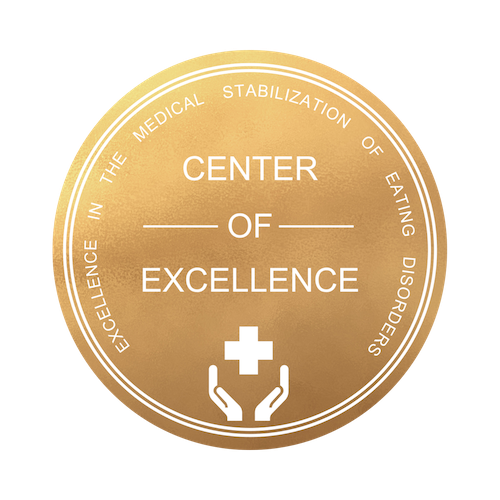Feeding Tubes for Severe Anorexia and ARFID
When utilized as a supplement to or in place of normal oral refeeding, feeding tubes for severe anorexia and ARFID can help facilitate nutritional rehabilitation for these extremely ill patients.
Eating disorder experts agree that effective treatment for anorexia nervosa begins with nutritional rehabilitation to restore body weight and reverse the cognitive deficits of prolonged starvation.
Is Feeding Tube Refeeding Necessary?
While simple in concept, this philosophy can be rather complicated in the practice of treating patients with severe anorexia and ARFID. Increasing caloric intake with proper blood monitoring too quickly can result in refeeding syndrome, a dangerous metabolic imbalance that can lead to heart failure. Gastrointestinal medical complications like gastroparesis and slowed colonic transit can cause physical discomfort associated with ingesting food, while psychological distress from increasing caloric intake can be overwhelming to patients. Taken together, these considerations may necessitate the use of feeding tubes for treatment of patients with severe anorexia and ARFID. While not necessary for most patients, these adjunct methods of refeeding can be valuable interventions in patients for whom oral nutritional rehabilitation alone is insufficient or intolerable.
Nasogastric Tube Refeeding Method
Nasogastric (NG) tube feeding offers a temporary means of supplementing normal oral feeding for individuals whose medical stability and/or body weight continue to decline despite refeeding efforts. A form of enteral feeding, the NG tube is inserted through the nostril, down the esophagus and into the stomach, where nutrition is delivered directly at a volume and frequency based on the metabolic needs of the patient.
Early in recovery, supplemental caloric intake via NG tube feeding supports medical stabilization, weight gain and improved cognitive function in severely malnourished individuals, promoting readiness for the psychological aspects of treatment. As treatment progresses, tube feeding can augment oral feeding when caloric need is especially high as ideal body weight is approaching.
NG Tube Benefits
NG tube feeding can also alleviate some distress associated with GI complications related to restriction, purging, laxative abuse and other eating disorder behaviors. Liquid nutrition is well-tolerated compared to solid nutrition in patients with impaired GI function, and limits physical discomfort associated with increased food intake. NG tube feeding rates can be reduced and eliminated as necessary as eating becomes normalized, patients adjust to the physical sensations of eating and they develop coping skills for anxiety related to caloric intake.
NG Tube Refeeding Guidelines
Tube feeding for severe anorexia and ARFID should only be used when medically necessary and, in most cases, as a supplement to oral feeding. It should be continuously monitored by experienced medical, nursing and nutritional professionals, and involve a thoughtful initiation of caloric intake reflecting each patient’s unique metabolic needs and medical complications. Using these guidelines in an inpatient medical setting or residential setting with experience in addressing the complications of refeeding seriously underweight patients, NG tube feeding can be a valuable tool facilitating both physical and psychological eating disorder recovery.
For more information about the use of feeding tubes for severe anorexia and ARFID, contact us.

